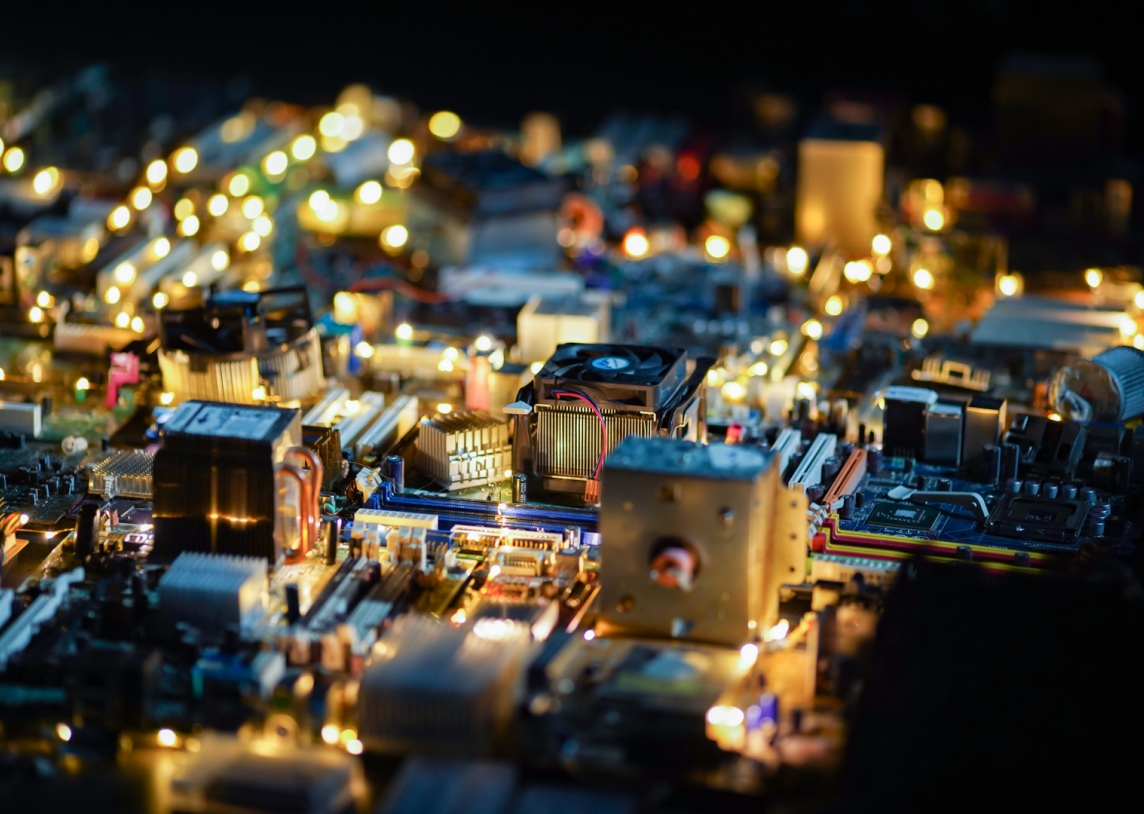News
The Big Bang
THE BIG BANG
Klaipėda Puppet Theatre (Lithuania), Itim Ensemble (Israel)
Concept and direction: Zvi Sahar, PuppetCinema
Set design, directing assistance and co-creation: Aušra Bakanaitė
Puppets: Aušra Bakanaitė, Marbeyad Studio
Music: Kobe Shmueli
Lighting design: Scahar Peggy Montlake, Paulius Vendelis
by Natalia GiorgiThe Big Bang is a puppet cinema performance developed as an international co-production between Itim Ensemble, Israel, and Klaipeda Theater, Lithuania. In this production, a trio of skilled puppeteers manipulate and voice the characters at the same time, with the performance simultaneously filmed and screened live on a projector screen hanging in the background.
Starting from the creation of the universe, the event the performance is named after, in a journey through time and space, we land in an alternative world made of electronic parts that would be considered waste on planet Earth. But this waste represents both the landscape and the city these characters live in, as well as composing the puppets themselves.
E-waste gains a whole new life and meaning as it is no longer automated or programmed to respond to electrical impulses, and is instead moved manually yet seamlessly.
Ki, a miniature robot, is the protagonist of the story accompanied by his faithful ‘dog’ Batty, a Duracell D battery. Much like a human-pet relationship, the two are inseparable, the only difference is that in order to recharge they don’t take naps, but rather actually plug themselves into a source of electricity. Their universe has a constant supply of electricity, an endless energetic cycle. One day, unfortunately, an unprecedented natural phenomenon disrupts their way of life: rain. Water jeopardises their safety and forces them to migrate, much like the climate crisis on planet Earth and its consequential migration displacement. The narrative arc reflects heavily on current issues, but partially lacks the gravity to encourage the audience to ponder on such crucial themes. In fact, even though Ki and Batty’s migration mirrors disaster displacement many communities are familiar with and have experienced, it doesn’t elaborate on their final destination and it doesn’t explore the aftermath of their escape. The somewhat open ending leaves room for the possibility that Ki and Batty could migrate to a different planet, considering the fact that the origin of their universe is the big bang, it could be structured similarly to ours. Unfortunately however the reality of climate change on planet Earth is much more grim, as there is no habitable planet B to migrate to.
This performance resembles characters and stories that have populated digital animation in recent years, such as Wall-e, a garbage cleaning robot capable of falling in love, and the Minions, one-eyed yellow creatures who have also populated their universe since the beginning of time, developing their own language characterised by a mixture of accents and funny sounds, much like Ki, Batty and the other characters in The Big Bang. These vocal qualities make them likeable and entertaining to children and adults alike.
We navigate the futuristic city through the lens that smoothly floats around the electrical parts and follows our characters in their journey, selecting the best and most cinematic angles for the audience to see, yet letting the spectators in behind the scenes.
It is a brilliantly executed show of puppet cinema, providing a creative and entertaining commentary on current issues, suitable for all ages.

